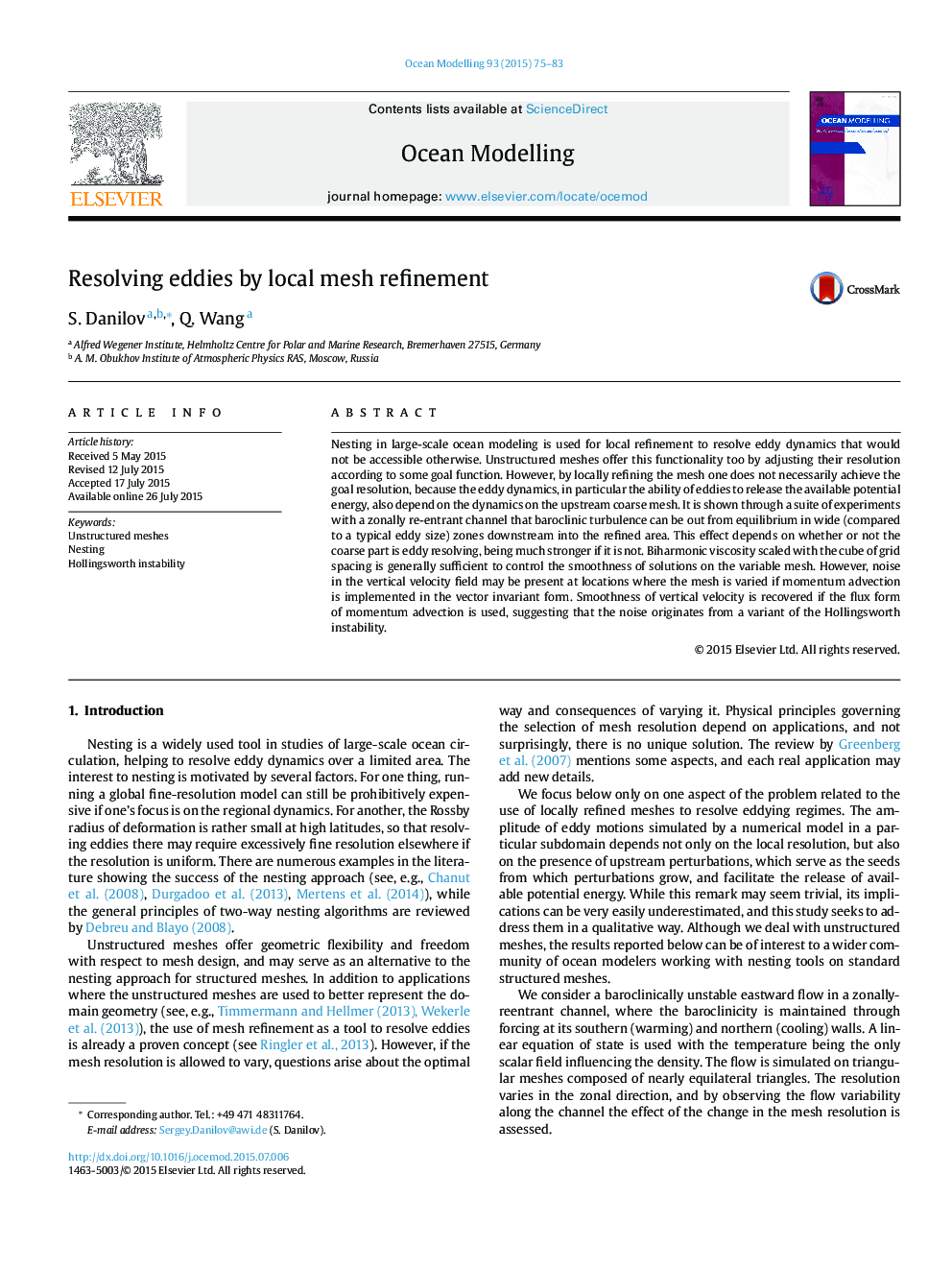| Article ID | Journal | Published Year | Pages | File Type |
|---|---|---|---|---|
| 4551976 | Ocean Modelling | 2015 | 9 Pages |
•We explore the impact of abrupt change in mesh resolution on simulated eddy dynamics.•There is a delay in the eddy variance saturation downstream of the coarse-fine mesh transition.•Scaled biharmonic dissipative operators maintain smooth solutions across the varying mesh•Hollingsworth instability may evolve on non-uniform meshes.
Nesting in large-scale ocean modeling is used for local refinement to resolve eddy dynamics that would not be accessible otherwise. Unstructured meshes offer this functionality too by adjusting their resolution according to some goal function. However, by locally refining the mesh one does not necessarily achieve the goal resolution, because the eddy dynamics, in particular the ability of eddies to release the available potential energy, also depend on the dynamics on the upstream coarse mesh. It is shown through a suite of experiments with a zonally re-entrant channel that baroclinic turbulence can be out from equilibrium in wide (compared to a typical eddy size) zones downstream into the refined area. This effect depends on whether or not the coarse part is eddy resolving, being much stronger if it is not. Biharmonic viscosity scaled with the cube of grid spacing is generally sufficient to control the smoothness of solutions on the variable mesh. However, noise in the vertical velocity field may be present at locations where the mesh is varied if momentum advection is implemented in the vector invariant form. Smoothness of vertical velocity is recovered if the flux form of momentum advection is used, suggesting that the noise originates from a variant of the Hollingsworth instability.
